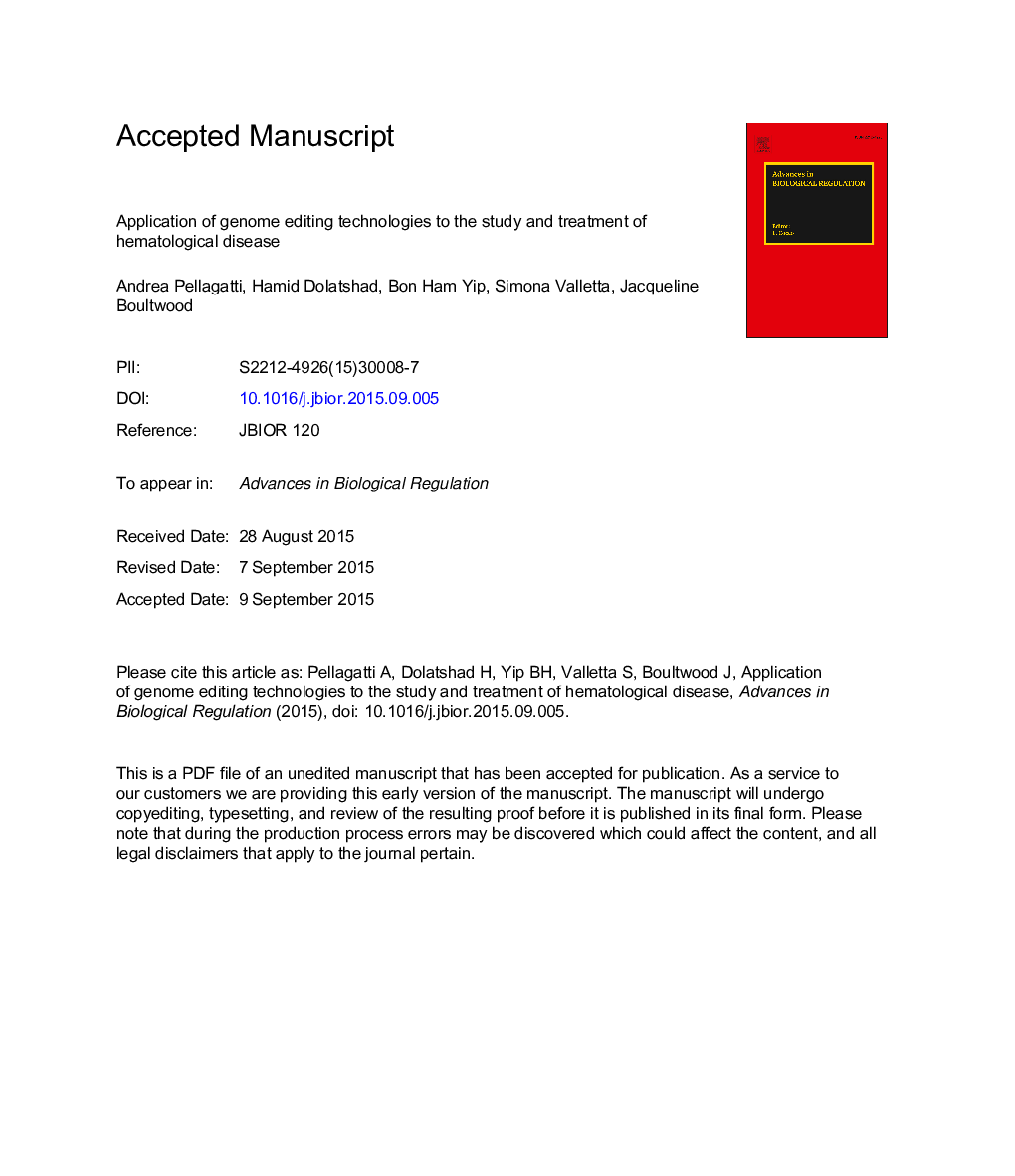| کد مقاله | کد نشریه | سال انتشار | مقاله انگلیسی | نسخه تمام متن |
|---|---|---|---|---|
| 8287999 | 1535871 | 2016 | 32 صفحه PDF | دانلود رایگان |
عنوان انگلیسی مقاله ISI
Application of genome editing technologies to the study and treatment of hematological disease
ترجمه فارسی عنوان
استفاده از فن آوری ویرایش ژنوم به مطالعه و درمان بیماری هماتولوژیک
دانلود مقاله + سفارش ترجمه
دانلود مقاله ISI انگلیسی
رایگان برای ایرانیان
کلمات کلیدی
موضوعات مرتبط
علوم زیستی و بیوفناوری
بیوشیمی، ژنتیک و زیست شناسی مولکولی
زیست شیمی
چکیده انگلیسی
Genome editing technologies have advanced significantly over the past few years, providing a fast and effective tool to precisely manipulate the genome at specific locations. The three commonly used genome editing technologies are Zinc Finger Nucleases (ZFNs), Transcription Activator-Like Effector Nucleases (TALENs), and the Clustered Regularly Interspaced Short Palindromic Repeats (CRISPR)-associated Cas9 (CRISPR/Cas9) system. ZFNs and TALENs consist of endonucleases fused to a DNA-binding domain, while the CRISPR/Cas9 system uses guide RNAs to target the bacterial Cas9 endonuclease to the desired genomic location. The double-strand breaks made by these endonucleases are repaired in the cells either by non-homologous end joining, resulting in the introduction of insertions/deletions, or, if a repair template is provided, by homology directed repair. The ZFNs, TALENs and CRISPR/Cas9 systems take advantage of these repair mechanisms for targeted genome modification and have been successfully used to manipulate the genome in human cells. These genome editing tools can be used to investigate gene function, to discover new therapeutic targets, and to develop disease models. Moreover, these genome editing technologies have great potential in gene therapy. Here, we review the latest advances in the application of genome editing technology to the study and treatment of hematological disorders.
ناشر
Database: Elsevier - ScienceDirect (ساینس دایرکت)
Journal: Advances in Biological Regulation - Volume 60, January 2016, Pages 122-134
Journal: Advances in Biological Regulation - Volume 60, January 2016, Pages 122-134
نویسندگان
Andrea Pellagatti, Hamid Dolatshad, Bon Ham Yip, Simona Valletta, Jacqueline Boultwood,
